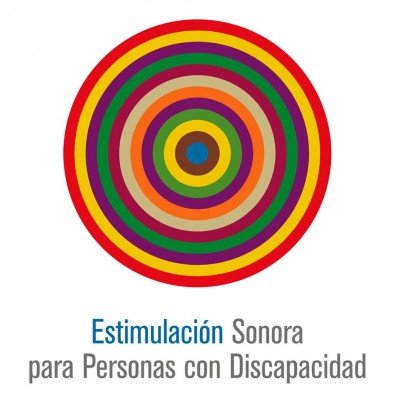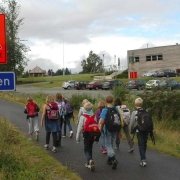Sound Stimulation Project
Excerpt
Sound stimulation has proven to be a successful method to develop social skills and increase autonomy of children, especially those with an autism spectrum disorder. Sound, music and bodily movements are inclusion elements as all children enjoy and benefit from them. It is part of a contemporary approach to inclusive education, focusing on creativity, innovation and playfulness.
Narrative, origins and objectives of the initiative
What kind of project is this? Please give a short description (summary) of it.
Starting out as a musical experiment, Sound Simulation has developed into a complex programme of working with children, parents and teachers through a multidisciplinary approach. Through play as learning process, corporal consciousness, censorial development, deep listening and the development of bonds between each other, they give concrete tools for the development of new language codes to improve people's quality of life.
Please tell us why, in general, this project is considered a successful one?
The programme has been ongoing and developing for 8 years. Interest in the programme has increased. They started off by offering services to special schools, but today general education is also reached. Their teacher training branch are helping to lay the foundations for inclusive education in Chile by acting as incentive for the collaboration of teachers working with general student populations and those working in special schools.
And why would you consider it a grass-roots initiative?
The programme was developed from scratch by experimental musicians, with Marcelo Maira in the lead.
What challenges needed to be solved in this project?
The main challenge is the Chilean education system being very traditional, focusing on cognitive skills and standardised testing with aversion towards experimental education methodology. As the teacher population is aging, and teachers over 40 tend to be conservative, so the challenge is to change mindsets and to reach out to younger, more open-minded teachers.
Is this initiative based on any particular theoretical framework? Which one?
None, but they are building their own, research-based sound simulation and somatic practices framework.
(Appendix) Is your intervention standing on its own or is it a part of a bigger and more holistic approach?
It is a stand-alone initiative.
Please describe the group(s) intended as beneficiaries of this initiative
Why has this group (have these groups) been chosen?
The first target group, children with autistic spectrum disorder, chose sound simulation rather than the team choosing the target group as they showed up at an experimental concert. Based on its success, a multi-disciplinary team first built an educational programme for this target group. It was later broadened to include the parents and teachers of these children as they also benefited from the methodology, partly by building a common ‘musical language’. The target group was later widened to children in general too. By now they are putting more focus on teacher training to have a multiplier effect.
Could you please tell us something about the relative size of the (of each) target group, within the school/university population, region and/or country?
It is difficult to estimate for the country. The programme has reached about 2000 students and 1200 teachers from public education children in the past 8 years, but they hope to reach more through the teachers trained. Chile has a growing population with a nearly 4 million children.
Which social characteristics are taken into account and what is the geographical area covered?
The centre of their work is the Santiago and Valparaiso areas in Chile. Children participating in the programme attend both public and private schools, so their socio-economic characteristics are diverse. The common ground is that they are in formal education as the programme is run at schools.
On which level is the project implemented?
Group/classroom level
Please describe the political and socio-economic factors that you believe have been important enablers for your initiative
Did the initiative have political support?
The initiative has little support from the conservative education policy of the country, but the cultural and health governance does support them.
How did it fit with local, regional or national policies?
It is an innovative approach in Chile and it does not yet fit policies at any level. They rather hope to influence policy with their evidence-based success acting as pioneers in a young country.
Who are the stakeholders supporting the initiative?
The programme mostly needs the support and commitment of the school management hosting it. Teachers and parents play a key role in successful implementation, partly by accepting it as a successful methodology, partly by participating in it, and, in the case of teachers, by becoming multipliers dedicating their free time to training.
Are there particular demographic changes present that are influencing the project?
In the past 5 to 10 years there has been a substantial increase in the diagnosis of people with Autism in Chile, and there is also an over-diagnosis of people with some type of special education need or disability, since public education institutions receive extra funding for children with disabilities. There has been an increase of malfunction in this field as there are schools or school heads who fall into this diagnostic envelope to receive more state funding. This means that, in some cases, they simply claim money and very often misuse these resources.
What is the institutional strategy and culture of the (educational) organization?
After the first years of ad hoc implementation the organisation was aiming at developing a structural framework for the programme using a multidisciplinary approach, and they work on the programme to have a strong evidence basis.
To what extent does the initiative have an influence on institutional policy (or potential influence) of the (educational) organization?
As the programme became more systemic, it has also led to a more systemic approach to organisation. First, the programme was offered by an informal structure that has over time been transformed into an educational foundation.
(Appendix) Is there public support for your initiative and the issue it addresses?
Public support is mostly built by those with experience on the success of the programme.
(Appendix) What other factors do you think have been important for the success of this initiative?
Responsibility, perseverance and strong commitment to what they do is something that can really transform people. Despite the difficulties they face in the field of funding, they are committed to deliver. They have created their own practice, which brings together skills of various techniques and practices, with each professional of the project team having an impact on design, generating an integral and rich methodology. They have managed to create a methodology with concrete axes and a practical way to develop the sessions. At the same time, the approach forecasts high flexibility, so that the structure is adapted to the individual needs of participants, sometimes during delivery. It is important for them to assimilate the activities to participants rather than the other way round.
Please describe the overall initiative design and the methods and tools used to reach the goals
Please describe the specific activities carried out.
Using everyday objects and simple musical instruments, in a space that makes all kinds of movements possible, the foundation implements a series of sessions repeated every week. The aim of this is to allow students to experiment and innovate by using these objects and their bodies to make sound (in reality a lot of noise too), and to make their own unique sound and bodily language. Throughout the year, the team also conducts research to monitor personal development of students in the 12 areas of personal skills and competences.
The sessions vary according to the participants, but basically they divide the session in 3 parts. The first part is dedicated to activating the energy of the bodies with somatic exercises, to decompress the liquid of the central nervous system, allowing the participants to enter their bodies, leaving them in a state of alertness, a favorable state. This is a good basis for the next stage during which they work with sound and on bodily development (it includes working on space and environment). The final phase is to do relaxation and meditation activities. Throughout these years they have found that, through this state of relaxation and deep listening, the knowledge and experience acquired enter the subconscious, affecting the entire body.
While teachers regularly participate in these sessions. the foundation also offers a ‘Saturday School’ for teachers to train them in the methodology and make them multipliers.
What were the key roles (teacher, student, management team etc.) within the project?
School leadership: providing space and possibility for implementing the project
Teachers: participation and personal professional development
Parents: participation and monitoring their children’s personal development
Multi-disciplinary team of the foundation: offering, conducting and researching the programme
Their work is increasingly known and recognized in the national context. There is a growing demand for training workshops for public education teachers. They have developed a methodology to work in inclusive contexts and that is not otherwise part of teacher training in Chile.
What ideas, tools, theories, models, methodology (etc.) have been used to reach the goals?
Experimenting with sound, vibration, the physical phenomena of sound.
What are the final revenues of the project?
Students show significant development in the following fields: sensory integration, life competencies, autonomy, development of communication skills and new forms of language, as well as creating strong meaningful bonds with attuned adults.
Please describe if your project ensured its sustainability
If so, how did you ensure the short-term impact of the project?
By offering the highest level of professional performance by the team.
And how did you ensure the long-term impact of the project?
Extensive and growing teacher training programmes aim at long-term impact of teaching and learning.
Has your project been replicated elsewhere?
The programme has been implemented in Germany and The Netherlands.
Please tell us about the resources used in this initiative
What was the budget for the initiative?
The programme has been run on a very low budget; for 2018 their budget was about 30.000 €.
How much did the initiative depend on volunteers?
As the budget is small, the programme depend very much on volunteer effort by the team and teachers.
How were the costs perceived by the public/the sector/other stakeholders?
They have struggled with obtaining public funding, but at the same time private and community funding was made available that shows communities found the programme cost-effective and necessary.
To what extent did the initiative achieve its objectives?
Please describe the evidence to support the success of your initiative.
Research evidence is present and gathering on skills and competence development of primarily children, but even adults report personal development and increased well-being. They have created their own evaluation system that measures where and how their methodology impacts. The instrument was jointly developed by professionals from the fields of arts, education, health and social sciences, and they have also been observed by neuro-scientists to highlight important strengths and weaknesses.
Did the intervention lead to any unintended (positive) outcomes?
In a way the whole project was an unintended success story rooted in a simple experimental concert. Starting to work intuitively with highly positive results, they realized the potential of what they had been doing and how they should continue to develop their practice.
What indicators (quantitative and qualitative) have you measured to demonstrate success?
Indicators on personal skills and competences along 12 areas are: social, emotional, autonomy, awareness, auditory system, visual, proprioception and vestibular, communication functions, expressive language, speaking and receptive, and also physical and artistic expressions.
(Appendix) How did you evaluate/monitor this intervention?
Through ongoing research during and after implementation in the classroom.








